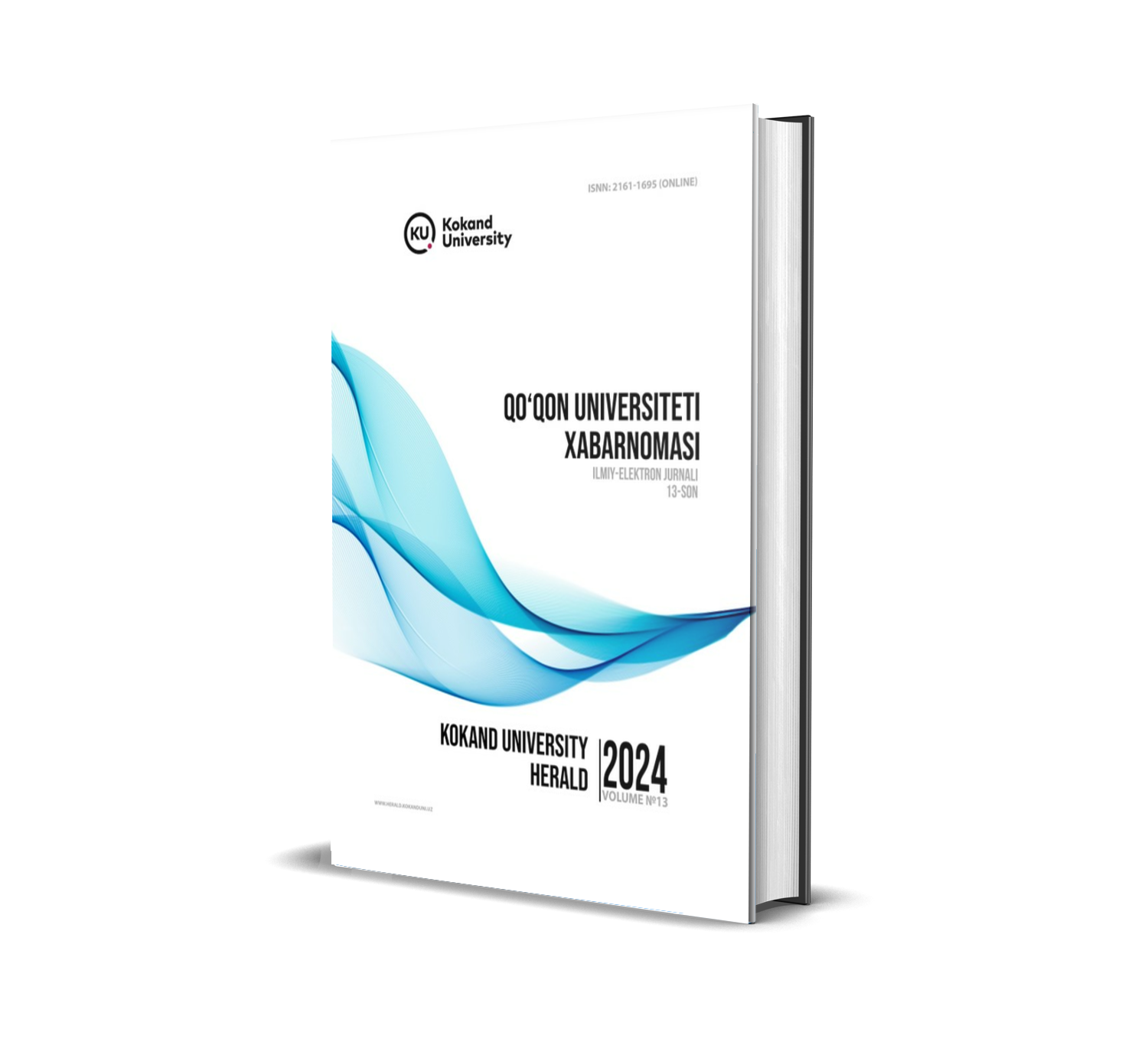A COMPARATIVE ANALYSIS OF SPEECH ACT THEORY APPLIED TO THE ENGLISH AND UZBEK LANGUAGES, CONSIDERING BOTH SEMANTIC AND STRUCTURAL LEVELS
DOI:
https://doi.org/10.54613/ku.v13i.1076Keywords:
speech act, semantics, aspect, cultural factors, classification, directives, commissives, expressives, declarations.Abstract
This article examines the application of speech act theory to the English and Uzbek languages, focusing on semantic and structural differences and similarities. Speech acts, as defined by Austin and further developed by Searle, form a crucial component of communication. This study investigates how these acts manifest across two distinct linguistic and cultural systems, providing insights into pragmatics, language use, and cultural context.
Foydalanilgan adabiyotlar:
Austin, J. L. (1962). How to Do Things with Words. Oxford University Press.
Brown, P., & Levinson, S. C. (1987). Politeness: Some Universals in Language Usage. Cambridge University Press.
Eelen, G. (2001). A Critique of Politeness Theories. Routledge.
Gee, J. P. (2014). An Introduction to Discourse Analysis: Theory and Method (4th ed.). Routledge.
Holmes, J. (1995). Women, Men and Politeness. Longman.
Kasper, G., & Schmidt, R. (1996). Developmental issues in interlanguage pragmatics. Studies in Second Language Acquisition, 18(2), 149–169.
Kadirov, K. (2010). Pragmatics of speech acts in Uzbek: A focus on honorifics and indirect communication. Uzbek Linguistics Review, 12(2), 45–60.
Leech, G. N. (1983). Principles of Pragmatics. Longman.
Muminov, R. (2015). Sociocultural influences on speech act realization in Uzbek. Journal of Central Asian Language Studies, 8(4), 22–36.
Searle, J. R. (1979). Expression and Meaning: Studies in the Theory of Speech Acts. Cambridge University Press.
Downloads
Published
Iqtiboslik olish
Issue
Section
License
Copyright (c) 2025 QO‘QON UNIVERSITETI XABARNOMASI

This work is licensed under a Creative Commons Attribution 4.0 International License.

